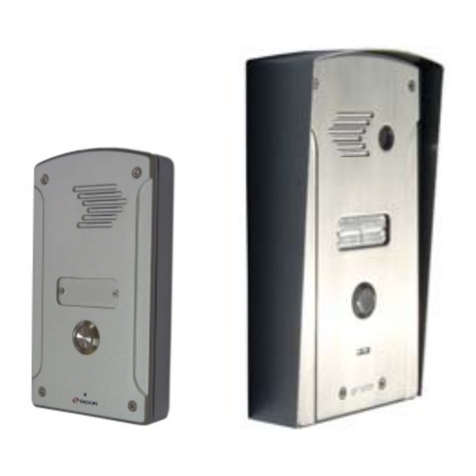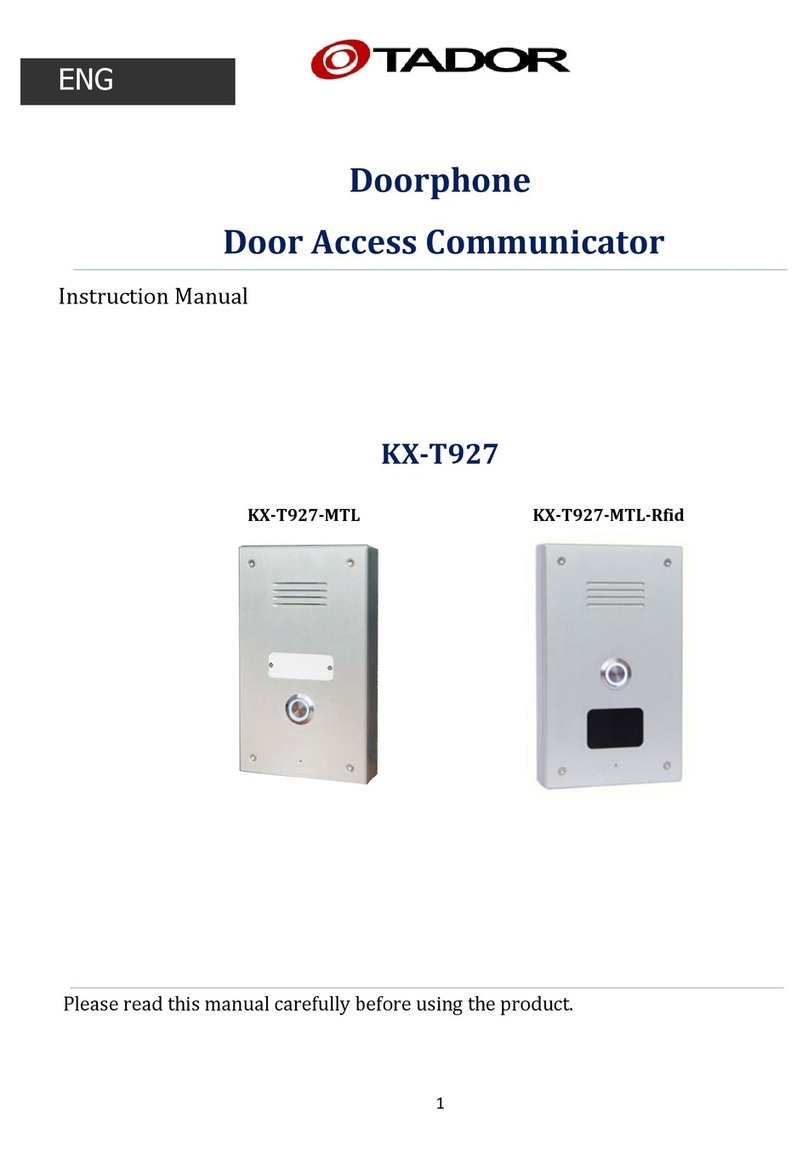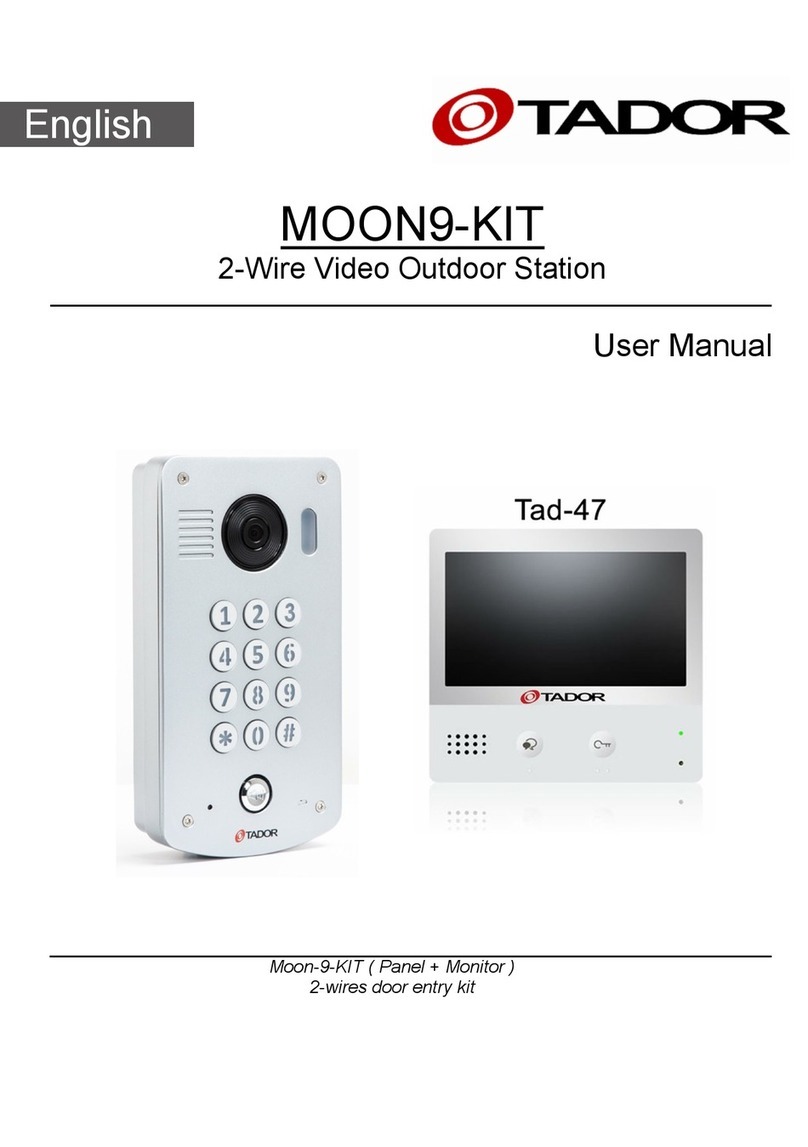Programming:
100 memory cells up to 6 digits long each one, available.
Cell 00 is used for door opening times values storage.
Cell 99 is used for programming code value storage.
The cells from 01 to cell 70 are used for different access codes values storage.
Code length is minimum 2 digits and ,maximum 8 digits. (programming code is a 6 digits
only, and recommended access code is 4 digits)
Programming code, access codes and opening times values are programmable via the
keyboard.
Programming mode: in order to store new access code, set opening times or changing the
programming code, you should enter to the Programming mode.
After clicking the valid programming code (manufacturer code if not changed is ⇒123456
confirm with*) the green led is blinking, now you can do the required programming as
described in the following examples. When finished you can enter more access codes or exit
this mode to the regular state by pressing
֠
֠֠
֠
.
Each key stroke is followed by a Beep sound, entering a false code or invalid pressing is
followed by a “Beeeep” sound sequence. Entering a valid sequence to memory cell is followed
by a long terraced sound.
Examples:
Storing a new access code
Enter the programming code: if not changed is: 123456 confirm with *, the green led will
blink.
now the following sequence should be entered: memory cell number (2 digits), access code
(2-6 digits), confirm with *. To finish press:
֠
֠֠
֠
.
You can add more access codes in cells 01-70 in the same way.
-to use the access code: press the access code followed by *.
or example storing the code 9124 in cell number:01.
Press: 123456 *, 01 then 9124 confirm with *.
To finish press:
֠
֠֠
֠
.
Changing the programming code
Enter the programming code: if not changed is: 123456 confirm with *, the green led will
blink.
now the following sequence should be entered: memory cell number 99 , new programming
code (must be 6 digits), then confirm with *.
Now you can add access codes in cells 01-70 as described or exit.
To finish press:
֠
֠֠
֠
.
or example changing the programming code to: 649731.
Press: 123456 *, 99 then 649731
,confirm with *.
To finish press:
֠
֠֠
֠
.
You should keep this code because this is the only way to enter the programming
mode!
Back to Initial status – default
Using an internal jumper the initial programming code can be restored. The access codes will
not be changed.
Turn the power off. Dismount the panel. Install a jumper on upper 2 pins labeled: DEF turn
on the power, a long terraced sound voiced for confirmation.
Turn off the power and move the jumper to 2 pins below. Reinstall the panel.
The CD-200 returns to normal condition. The Programming code now is: 123456 *.
Canceling an access code
A particular access code could be cancel if its memory cell location is known.
Enter the programming code: if not changed is: 123456 *, the green led will blink.
































